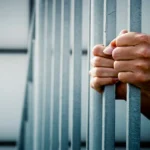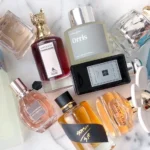
Pencils are one of the most widely used writing tools in the world. You’ve probably used a pencil at some time in your life, whether you’re a student taking notes in class, an artist drawing a masterpiece, or simply writing down a to-do list. Despite their pervasiveness, there are many intriguing and unexpected facts about pencils that you may not be aware of. Pencils have an interesting history, from their inception to their application in modern technologies, and they continue to be a vital instrument in our everyday life. This post will go over 30 fascinating facts about pencils that are likely to stimulate your attention.
The modern pencil was invented in 1795 by Nicholas-Jacques Conte, a French artist and scientist. He developed a new method of mixing graphite with clay that created a smoother and more durable writing implement.
The word “pencil” comes from the Latin word “pencillus,” which means “little tail” or “brush.” This is likely because early pencils were made from brushes that had a graphite tip.
The first pencils were made from a type of graphite that was found in Borrowdale, England. This graphite was so pure that it could be sawn into sticks and used for writing.
Before the invention of erasers, bread crumbs were used to remove mistakes made with a pencil. Erasers were not invented until the 1850s.
The hardness of a pencil is measured on the “HB” scale, which ranges from 9H (the hardest) to 9B (the softest). This scale was developed in the 19th century by the Austrian Josef Hardtmuth.
The world’s longest pencil measures 1,091.2 meters (3,579 feet) and was created in Germany in 2011. It was made by gluing together thousands of individual pencils.
The average pencil can write a line that is approximately 35 miles long. This is based on the amount of graphite in an average pencil and the length of a typical line.
Pencils can write in zero gravity and are used on space missions by astronauts. Unlike pens, which rely on gravity to push ink onto paper, pencils use a dry graphite that does not require gravity to work.
The world’s most expensive pencil, the Graf von Faber-Castell Perfect Pencil, is made of 240-year-old olive wood and costs $12,800. It also comes with a built-in sharpener and eraser.
Pencils are made of a combination of graphite and clay, with the ratio of graphite to clay determining the hardness of the pencil. The more graphite in the mixture, the softer the pencil will be.
The first mechanical pencil was invented in 1822 by Sampson Mordan and John Isaac Hawkins. It used a system of gears to extend and retract the graphite tip.
Pencils were once used to mark exam papers in India because they could not be erased or altered. This practice was common until the 20th century.
The average pencil can write approximately 45,000 words, or draw a line that is over 30 miles long. This is based on the length of a typical line and the amount of graphite in an average pencil.
The famous artist Vincent Van Gogh often used pencils to make sketches for his paintings. He believed that sketching was an essential part of the artistic process.
Pencils were used to create the original drawings for the famous “Looney Tunes” cartoons. The animators used pencils to create the initial sketches that were then traced onto cels for the final animation.
The world’s largest pencil weighs 18,000 pounds and is over 76 feet long. It was created by the Faber-Castell company in celebration of their 250th anniversary.
During World War II, American pilots were given pencils with special lead that could be used to make marks on metal surfaces. These pencils were used to make notes and calculations on aircraft control panels.
Pencils are the most widely used writing instrument in the world. They are used by millions of people every day for writing, drawing, and sketching.
The pencil eraser was invented by Hymen Lipman in 1858. He attached an eraser to the end of a pencil and patented the idea.
The largest pencil collection in the world is owned by Emilio Arenas from Chile. He has over 18,000 pencils from all over the world.
The Yellow No. 2 pencil is the most popular pencil in the United States. It is called a No. 2 because it is the second darkest pencil on the HB scale.
The lead in pencils is not actually made of lead, but of graphite. The term “lead pencil” is a misnomer that has been used for centuries.
Pencils were used by early filmmakers to sketch out storyboards and plan their films. They would create a series of drawings that showed the different shots and camera angles for each scene.
The world’s smallest pencil is only 4cm long and has a diameter of 0.5mm. It was created by a company called T.K. Hama in Japan.
The first colored pencils were invented in the early 20th century by the German company Faber-Castell. They were originally designed for artists and were not widely available until the 1930s.
Pencils were once used to make notes on vinyl records. The soft graphite would not damage the surface of the record and could be easily erased.
The Faber-Castell company, which is one of the world’s largest pencil manufacturers, was founded in Germany in 1761. It is still family-owned and operated to this day.
The shape of the modern pencil, with its hexagonal barrel, was designed to prevent the pencil from rolling off of a desk or table.
The American author John Steinbeck used up to 60 pencils a day while writing his novels. He preferred to write in pencil because he believed it allowed him to think more deeply about his writing.
The phrase “the pen is mightier than the sword” was coined by English author Edward Bulwer-Lytton in his 1839 play, Richelieu; Or the Conspiracy. However, the phrase may have been inspired by an earlier statement made by the ancient Greek writer Euripides, who wrote, “The tongue is mightier than the blade.”
Frequently Asked Questions About Pencils
The humble pencil, a timeless writing tool, holds a surprising amount of history and intrigue. Here are some common questions about pencils, answered in detail:
1. What are pencils made of?
The core of a pencil, often mistakenly called “lead,” contains graphite, a soft, black mineral composed mainly of carbon. Clay is mixed with the graphite to control hardness and prevent breakage. The core is encased in wood, commonly cedarwood due to its straight grain and easy sharpening. Metal ferrule (the band at the tip) and eraser complete the familiar pencil design.
2. Why is pencil “lead” not actually lead?
Early pencils did contain lead, but it was toxic and could cause lead poisoning. In the late 18th century, graphite was discovered as a suitable replacement. The term “lead” persists due to the similar marking properties.
3. What do the numbers and letters on pencils mean (e.g., HB, #2)?
These markings indicate the hardness of the graphite core. A grading system (HB being the most common) is used, with:
- H (Hard): Produces lighter lines, requires more pressure, good for precise drawing and drafting. (Numbers like 2H or 4H indicate increasing hardness)
- B (Soft): Makes darker lines, requires less pressure, good for shading and artistic expression. (Numbers like 2B or 4B indicate increasing softness)
- HB: A balanced middle ground, suitable for everyday writing and sketching.
4. Can you sharpen a pencil underwater or in space?
Surprisingly, yes! Pencils work by abrasion, the graphite scraping off onto the paper. This friction can occur in various environments, making pencils a reliable writing tool for astronauts and even underwater exploration.
5. How long does a pencil last?
The lifespan depends on usage and pressure applied. On average, a sharpened pencil can write 45,000 words or draw a line 35 miles long!
6. Why are some pencils yellow?
Yellow pencils became popular in the 19th century when American pencil makers wanted to associate their product with high-quality graphite from China, often dyed yellow. The color stuck, and yellow pencils remain a common choice.
7. What are some interesting facts about pencils?
- Pencils were first used in the 16th century.
- More than 14 billion pencils are produced worldwide annually.
- Ernest Hemingway, among other famous authors, preferred writing with pencils.
- Breadcrumbs were used to erase pencil marks before erasers were invented.
8. What are some different types of pencils?
Beyond the standard writing pencil, there are varieties for specific uses:
- Mechanical pencils: Refillable with lead refills of varying hardness.
- Carpenter pencils: Flat or oval-shaped to fit comfortably in tool belts and resist rolling.
- Charcoal pencils: Create soft, dark lines for artistic expression.
- Color pencils: Richly pigmented cores for vibrant drawing and coloring.
9. Are pencils eco-friendly?
Pencils made from sustainably sourced wood and containing recycled materials can be a more eco-friendly writing choice compared to disposable pens.
10. Why are pencils still relevant in the digital age?
Pencils offer several advantages:
- No ink cartridges to run out: Always ready to write.
- Durable: Can withstand drops and rough handling.
- Forgive mistakes: Easily erasable for corrections.
- Tactile experience: Many find the act of writing with a pencil more enjoyable.
Whether for creative expression, everyday writing, or as a reliable backup, the pencil remains a versatile and enduring tool.








